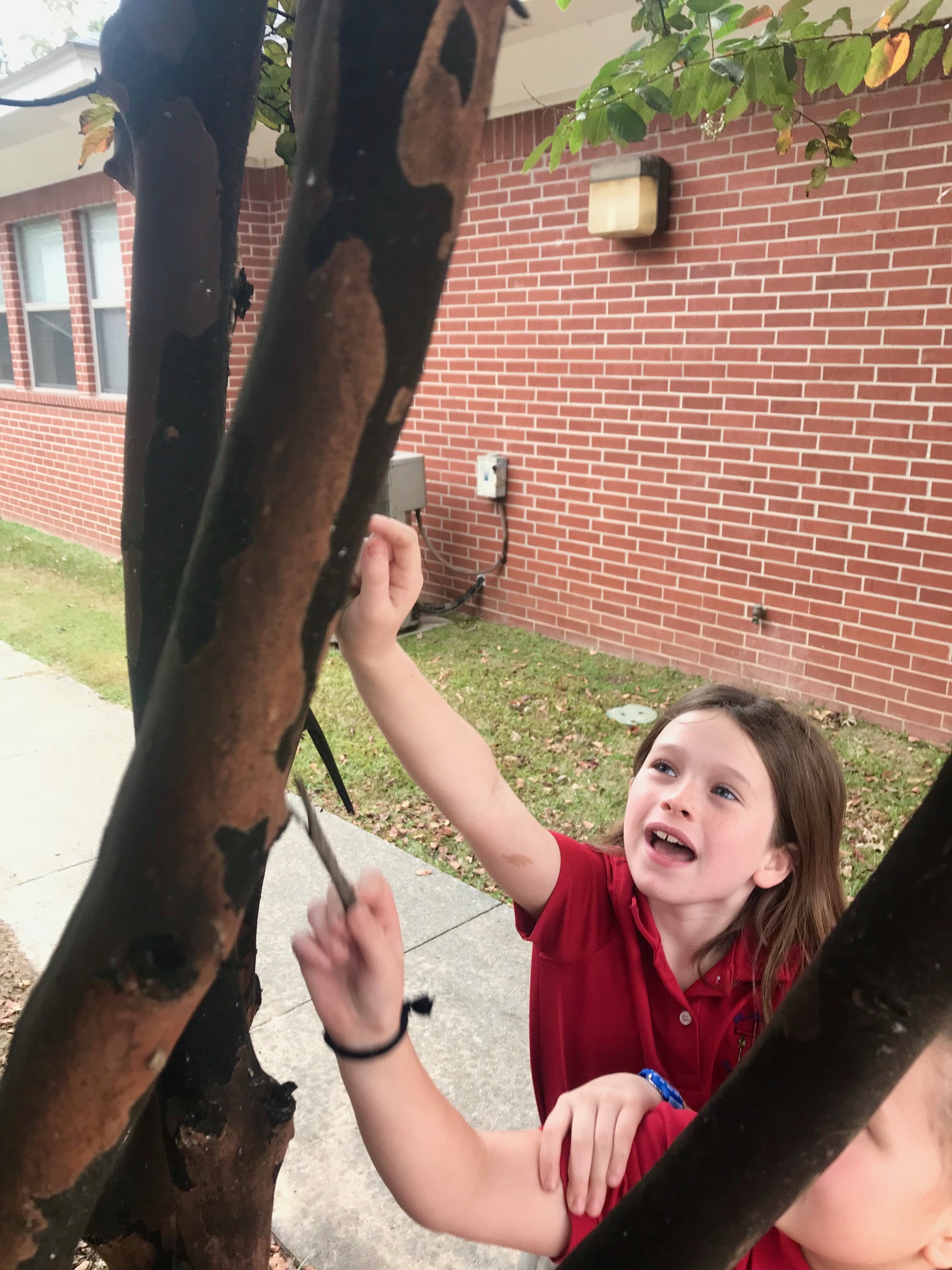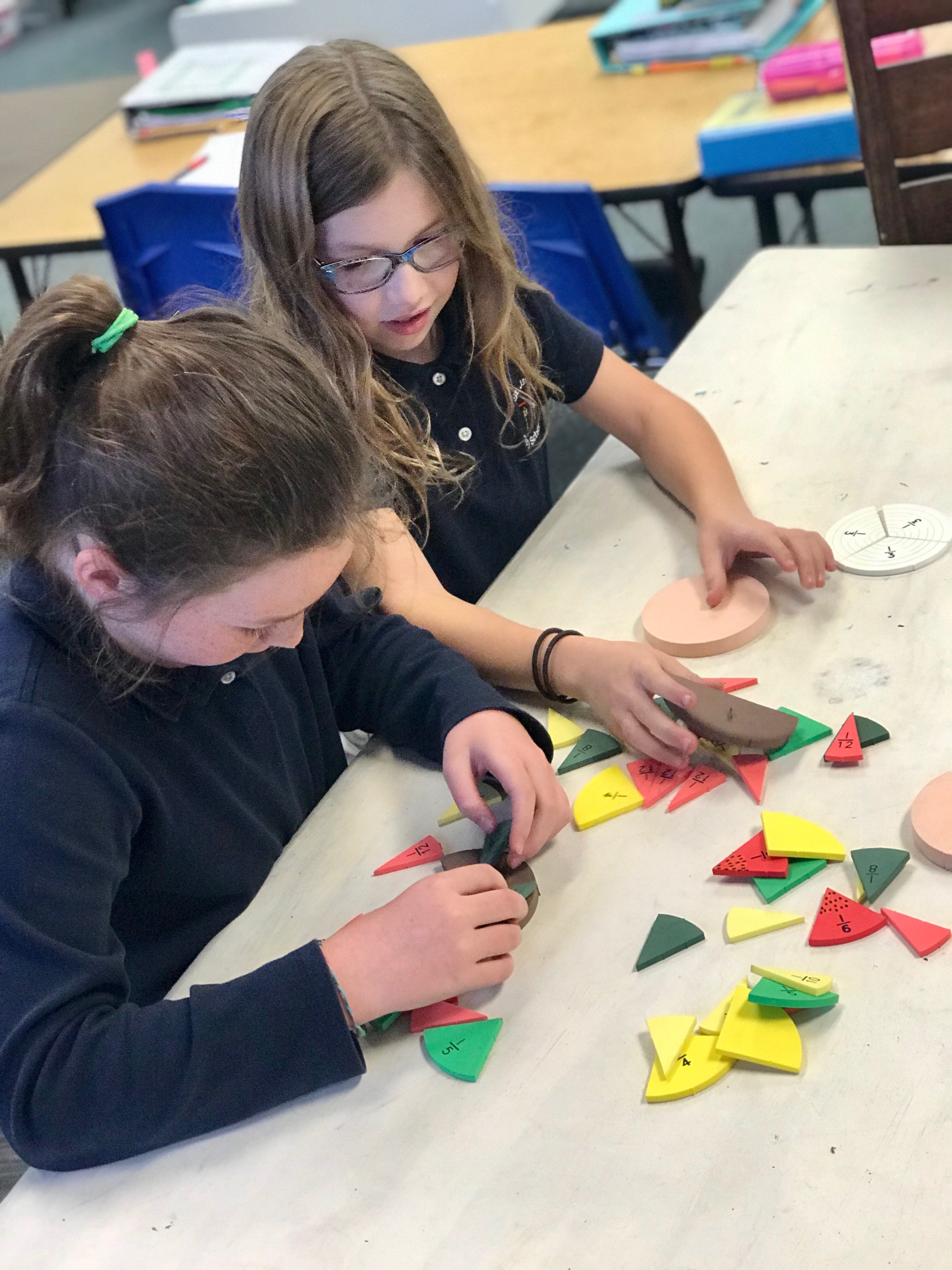math connections
Our minds, by nature, make connections. Like the silk of a spider, we send a cognitive thread from one point to another, bridging the conceptual distance between what is foreign and what is familiar. Our webs of understanding are shaped by this accumulation of experiences called relational memory.
Every day I have the privilege of watching children acquire new knowledge through the perceptual filter of their previous experiences. Their eyes light up in wonder of the world around them and new information is treasured like a piece to an exciting puzzle. They use prior knowledge to find how it fits in with what they already know.
When given the opportunity to learn through discovery, kids not only develop a love for education, but also gain a more complex understanding of the content.
In our most recent math studies, the third grade students have eagerly been exploring fractions. With manipulatives in hand, the children have worked together to connect their knowledge of number sequences and fractional parts to the idea of equivalent portions. With differentiated tasks, small groups have tested their theories about how a divided whole can be represented and how it relates to other components of math.
In our integrated environment subject areas have no borders. Once math time is “over”, I continue to see my students synthesize the pieces from our lesson into their every day routines. They use mathematic vocabulary in everyday language to measure time and space, program robots, interact on the playground, and explain the world around them.
A solid educational foundation isn’t established by rote memory or test-taking strategies, but by connecting ideas to one another and immersing learners in the process.



